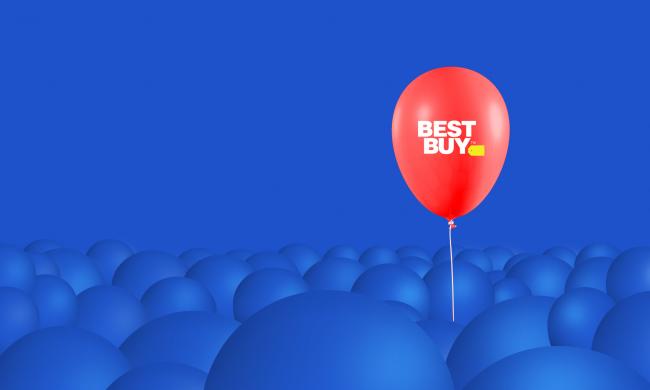Thinking Innovatively: Finding Opportunities for New or Traditional Businesses
Two decades ago, the business world was shaken to its core and sent into a panic over technology. Today, it seems that we are at the same crossroads.
Remember the Y2K hysteria? This phenomenon took place at the turn of the 21st century, when programmers and computer users feared that all computers would stop working on December 31, 1999. Can you imagine what a nightmare it would have been for businesses and industries around the world if computers had simply stopped working overnight? Lions and tigers and bears, oh my! A number of companies invested good money to avoid the Y2K catastrophe. Then the year 2000 came and went and Y2K proved to be more smoke than fire.
Are we experiencing similar hype about digital disruption? Business strategists are bombarding us with statements like: “Digital is the main reason half of the S&P Fortune 500 companies have disappeared since the year 2000,” “Since the year 2000, 52% of the S&P Fortune 500 companies are no longer here and 40% of the S&P Fortune 500 companies will no longer exist in a meaningful way,” “About half of the S&P 500 companies will be replaced in the next decade,” and “Digital disruption has demolished 52% of the Fortune 500 since 2000.” Yikes! Now we know what has been keeping C-suite executives up at night!
As a business and marketing strategist who specializes in capturing the opportunities that disruptive change creates for companies, I benefit tremendously from the projections and instabilities that companies and industries are currently facing in regards to digital disruption, especially during a time of intense and continual change. Cha-ching (cash register sound)! However, is digital disruption the only link to the market ruckus, as some business strategists clearly suggest? Or is something much greater at work here? There’s no denying that digital disruption offers great opportunities to some businesses, while it hinders others. However, when we look more closely at companies that were S&P Fortune 500 fixtures and that have since been brought to their knees (like Toys “R” US, Circuit City, Radio Shack, Sears, Compaq, Eastman Kodak, Nokia, US Airways, Lehman Brothers, Paine Webber, and other greats), can we really point the finger directly at digital disruption as the ultimate culprit? Or has this claim been blown out of proportion? If many Fortune 500 businesses were disrupted by the wave of technology that has been sweeping our country over the last decade, why are Blockbuster and Kodak the two main examples that many business strategists provide in support of their claims that a technology tsunami will be destroying many businesses?
This seems highly unprobeable given that, in the past two years, for roughly 44 companies that fell off the S&P’s Fortune 500 list, digital disruption was not the underlying cause for that change. Instead, the factors causing low performance or disappearance from the S&P 500 varied among these 44 businesses. They included poor-performance betting, regulatory challenges, steep dips in the prices of certain commodities (oil, metals, etc.), and the selling of subsidiaries, which redefined companies’ financial performance. Additional reasons included new and increasing market competition, corporate inversions, mergers with (or acquisitions by) other companies on or off the list, and the fact that some companies went private. Also, keep in mind that simply because a company tumbled off the Fortune 500 list doesn’t mean that it failed. Case in point: Avon posted $5.5 billion (USD) in revenues in 2018, yet slipped off the S&P Fortune 500 list. Maybe Avon lost its place to Ulta Beauty, a retail operation with 1,170+ stores across the 50 states and a new member of the Fortune 500 in 2018, posting +$6.8 billion (USD) in revenues in 2018 and then $7.0 billion (USD) in 2019. And did someone say retail is dead?
To further explore the effect of digital disruption on Fortune 500 companies and its correlation to the coming tsunami of businesses, let’s view this matter from another angle. We’ll take a closer look at two companies in the same industry – Circuit City and Best Buy (both previously ranked as Fortune 500 companies) – and talk about why one failed while the other continues to flourish. Unless you’re six feet under, you’ve probably heard the rumor that the retail industry is dying. One can’t help but wonder why Circuit City, the second-largest electronics retailer (directly behind Best Buy), failed in 2008 and why, in 2018, Best Buy saw its earnings jump by 46%. Well, for starters, Best Buy didn’t overestimate America’s fascination with its products. Instead, it focused on redefining its business propositions. Best Buy didn’t underestimate the competition; instead, it responded to them. With its constant focus on exploring new territory, the company’s leadership didn’t let Best Buy become trapped by its success (“Success Trap”). Best Buy didn’t agitate the modern consumer, nor was it at the center of any scandals that would have tarnished its business or brand. Best Buy didn’t fall out of favor with existing and potential customers. Rather, it kept its eyes on the prize and focused on delivering what really mattered to its audience. Despite its success, Best Buy didn’t sit back and relax. It focused on enhancing its long-term viability and became more vigilant than ever about remaining innovative. Best Buy didn’t limit its business by taking the old company approach. Rather, through innovation, it future-proofed itself by thinking about things differently.
I know what you’re probably thinking: Best Buy, a market innovator? Really? In this day and age, as a general rule, too many people lump together digital technologies and innovation into one entity. (I’m guilty of this, too!) Think about it: While all lawyers are doctors, not all doctors are lawyers. (Indulge me while I reflect back on my LSAT studies.) This means that while all new and digital technologies are innovative, not all innovation involves technological advancement. A host of different types of innovation exist, such as business strategy innovation, process innovation, marketing innovation, breakthrough innovation, disruptive innovation, product innovation, etc. At the end of the day, “innovation” means different things to different businesses and industries. Therefore, being prepared for the future of digital technology is only half the battle. Thinking innovatively allows a business to find opportunities for new or traditional services and/or products and can create key differentiators that set a company apart. Driving one’s business for today and innovating for tomorrow will help a company exist in a meaningful way.
In 2017, Best Buy had a record year of sales, posting $39.4 billion (USD) in total revenue. However, despite this success, the company decided to disrupt the status quo and seek new possibilities by refreshing its brand and messaging through an innovative marketing strategy. It was a strategic move that most companies or COOs wouldn’t have taken, especially considering the company’s success in the previous year. As part of its brand refresh strategy, Best Buy changed its branding message from “Expert Service. Unbeatable Price.” to “Let’s Talk About What’s Possible.” Using a friendly and approachable voice, the new marketing strategy and brand message focused a spotlight on the benefits of having a one-to-one retailer-customer conversation with tech-savvy employees who can find the best products for each customer’s needs. This personalized conversation campaign approach was centered around the fact that Best Buy goes the extra mile to help consumers achieve greater things through technology and thereby offers something that the market leaders and flank competitors (i.e., the e-commerce sites) don’t: an enhanced customer experience.
As part of its campaign, Best Buy utilized both digital and print media platforms, as well as its human asset of more 100,000 employees across the country, by redesigning its branded employee t-shirts. The company also updated its digital platforms, strategically positioned printed signs and banners throughout stores nationwide, designed and printed shopping bags with its new logo and brand message, took advantage of print ads, published a 2018 holiday direct mail toy book (catalog), regularly printed doorbuster handouts, and aired commercials that focused on its employees. As a result, Best Buy's total revenues grew from $39.4 billion (USD) in 2017 to $42.9 billion (USD) in 2019. The company’s new direction and successful campaign rollout in part represent an increase of approximately 8.8%. I think it’s safe to say that agile companies that embrace change with innovation – such as Best Buy – are future-proofing their businesses.
While I strongly believe that a company’s ability to adapt to technological change should be high on the priority list, it really does take more than a website, social media, online marketing, and online conversion for a business to survive and thrive in today’s complex business environment. It also takes innovative thinking coupled with strong execution and the right marketing tactics!

About Blogger
Soraya E. Bosi is the Chief Strategy & Client Development Officer at DDP, a communication solution and print strategies company that helps businesses build their brands, draw in audiences,
GET A QUOTE
We Help Businesses
Succeed!




